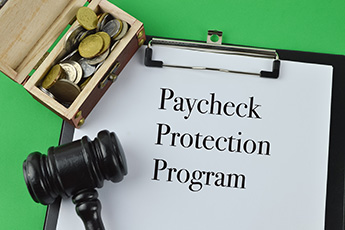In 1668, philosopher John Locke argued against a measure to lower interest rates, saying that the unintended consequences outweighed the intended benefit. Among the unintended consequences he foresaw was an increase in fraud.The Paycheck Protection Program (PPP) provided a lifeline to small businesses during the pandemic, but the easy money also had a major unintended consequence: a flood of fraud. Years later, federal prosecutors are still going after violators, and community financial institutions (CFIs) that processed loans may find themselves in the crosshairs. CFIs were among the most prolific players in the PPP program. They received the most PPP applications of all lenders, at 48%, and had the highest approval rate, at 78%. CFIs clearly helped small businesses stay afloat during the early days of the pandemic. Yet, the rash of fraud in the PPP program has kept prosecutors busy and will likely continue to do so well into 2030. That means CFIs need to be vigilant and cautious about their PPP loan portfolios for years to come. While the most serious cases have involved fraudulent applicants who, in essence, looted the PPP program, there have also been cases in which banks have been sanctioned for approving loans that they knew or should have known were shady. That’s where the real risk is now for CFIs who churned out loans in the frenzied atmosphere of the early pandemic.For example, Popular Bank of New York was fined $2.3MM in 2023 for processing six PPP loans totaling $1.1MM. According to the Federal Reserve Board, the bank processed the loans even though it “found significant indications of potential fraud” and then did not report its findings in a “timely manner.”That case was a warning shot for other banks, and CFIs would do well to take it seriously. Getting caught in a PPP fraud case can not only lead to hefty fines but also do serious reputational harm. Tips for Managing PPP Fraud Risk Years Later Here are 7 ways CFIs can try to protect themselves from these risks right now:
- Review your PPP processes to make sure they were sound and being followed. Were you compliant with anti-money laundering (AML) protocols?
- Make sure you have segregated your PPP loans so that they can be evaluated separately from regular loans. You should be able to determine if loans were used for their intended purposes, i.e., to support payroll.
- Review your PPP loan portfolio for “stacked” loans or other indications of suspicious loans.
- Make sure your documentation on PPP loans is in order and can be provided on request. If you are unable to provide documentation, you could open yourself to federal scrutiny.
- Make sure you retained all necessary documentation on loan forgiveness cases.
- Be prepared to report anomalies that you find. Proactively reporting an issue upon discovery can help avoid further action.
- You should be prepared to respond in case you are audited or receive a subpoena about PPP loans. In such a case, the government will likely be requesting confidential information on a loan client. You should understand the issue and risks and how you will respond.
The Feds are still chasing billions in suspected fraud, and it’s not just the borrowers being examined but the lenders as well. CFIs should have a clear picture of their own vulnerabilities and potential for regulatory intervention as the federal probes continue for the rest of this decade.




